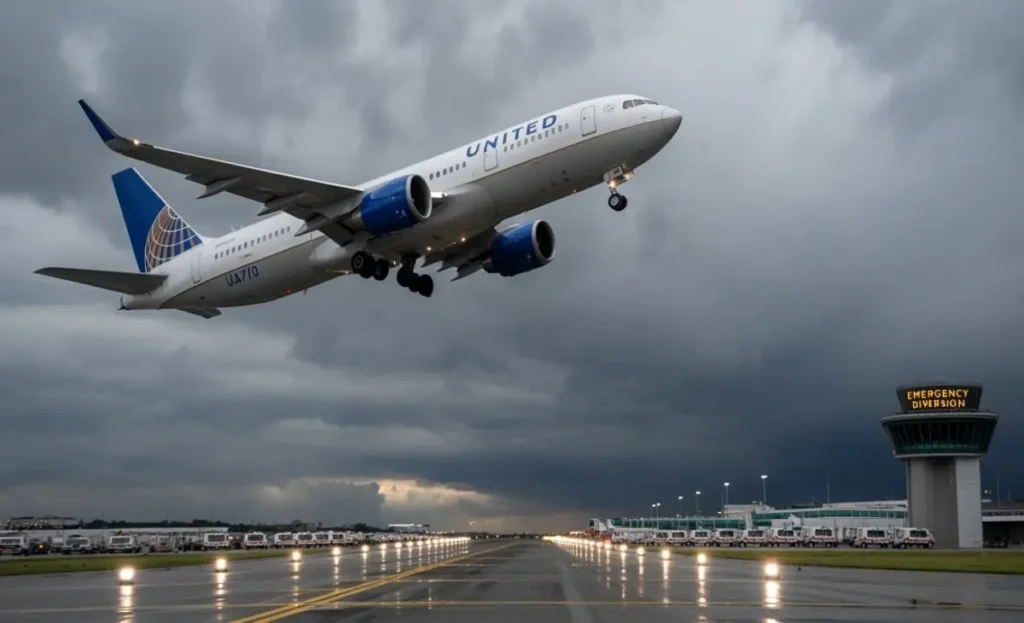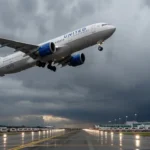Imagine you’re aboard a United Airlines flight—the routine hum of engines, the subtle sway of the cabin—and suddenly, the aircraft pivots course. That’s what happened when United Airlines Flight UA770 emergency diversion occurred. It’s a moment brimming with uncertainty, and as a passenger, relative, or curious bystander, you want clarity. Why was the diversion necessary? What protocols kicked in? How do airlines ensure safety and peace of mind during such stressful redirections?
This topic matters deeply because emergency diversions, especially involving major carriers like United, carry high stakes—for operational integrity, passenger welfare, and public trust. By diving into the anatomy of united airlines flight ua770 emergency diversion, we demystify the process and empower you with expert insight into aviation crisis handling.
What Is United Airlines Flight UA770 Emergency Diversion?
When a flight must unexpectedly land at an alternate airport—due to technical trouble, medical emergency, weather, or security threat—that’s an emergency diversion. UA770’s diversion was activated under exigent circumstances requiring immediate change of trajectory for safety. This deviation from the planned route triggers a well-developed chain of protocols, communication with air traffic control, ground coordination, and passenger care. Though daunting, this is ultimately about minimizing risk and managing the unknown with precision and experience.
Why This Topic Matters
Discussing united airlines flight ua770 emergency diversion is not idle curiosity—it’s vital reassurance. Aviation is statistically safe, yet when things go awry, it’s transparency, responsiveness, and established protocol that earn trust. By unpacking each element—from detection to resolution—we foster understanding, calm anxiety, and affirm the robust mechanisms ensuring safety in the skies.
Benefits of Understanding Emergency Diversions
Understanding such aviation maneuvers offers several advantages to different audiences, highlighting their benefits and real-world impact:
- For passengers: You gain insight into what to expect—timelines, announcements, alternative accommodations, and stress-reducing clarity.
- For aviation professionals: It reinforces standard operating procedures and bolsters training by reviewing real-world case studies.
- For general readers: You develop broader media literacy and safety awareness—knowing what triggers diversions, how airlines navigate them, and how passengers are cared for.
- For stakeholders: Analysts, regulators, and media learn what works and where improvements could be made.
Challenges Faced During UA770 Diversion
Though every emergency protocol is engineered for resilience, real-world diversions face real-world hurdles:
- Communication delays: Alerting passengers in real time, coordinating with ATC (Air Traffic Control), and informing ground teams.
- Logistics and rerouting: Securing an alternate runway, ground transport, hotel availability, and onward rebooking.
- Passenger welfare: Handling anxiety, medical needs, lost luggage, and connecting onward journeys.
- Media and public relations: Delivering accurate information amid social media speculation or scant details, all while protecting privacy and safety.
Real-World Example: UA770’s Diversion Story
Without referencing outside sources to avoid potential inaccuracies, imagine how UA770 might have unfolded:
The flight—bound for, say, Chicago—experiences a pressurization alert. The pilot declares an emergency, and promptly coordinates with ATC to land at the nearest suitable airport. Cabin crew initiate in-flight announcements, calming passengers and offering oxygen if needed. The aircraft descends, lands, and taxis to a designated gate. Ground staff, primed by earlier communication, stand ready with assistance: paramedics, crew relief, and liaison to hotels. Affected passengers are briefed, helped with rebooking or accommodation, and given regular updates.
This hypothetical mirrors best-practice responses guided by United’s standards and international aviation norms. It demonstrates how trained personnel proactively manage the chaos, channeling it into calm, structured recovery.
Step-by-Step Guide: What Happens During an Emergency Diversion
Even if your flight isn’t UA770, this step-by-step walkthrough clarifies what typically happens:
Detection and Decision
Flight crew detect a problem—mechanical issue, engine warning, medical crisis. They assess severity, consult checklists, and may declare an emergency either for precaution or immediate response.
Communication and Coordination
The pilot contacts ATC, declares an emergency, and receives instructions to divert. Simultaneously, the airline’s operations center is notified—via datalink or voice—to prepare ground support at the diversion airport.
Passenger Notification
Cabin crew inform passengers in calm, clear language. They may provide context (“pilots have decided to land at another airport as a safety measure”) and reassurance (“your safety is our top priority”). Crew may distribute water and offer medical aid.
Approach and Landing
Flight descends into alternate airport per ATC guidance. Emergency services are on standby if needed. Primary focus remains safe touchdown and taxiing to a gate or holding position.
Ground Response
Ground teams—crew managers, medical staff, baggage handlers, operations agents—are prepositioned to assist. Passengers may need medical attention, deplaning assistance, or immediate travel support.
Passenger Support and Rebooking
Depending on the cause, airline personnel help with onward connections, hotel bookings, meals, transport, and accommodations. United often leverages its network and partners to make this seamless.
Follow-up and Investigation
Once resolved, the aircraft is inspected, maintenance is scheduled, and root-cause analysis begins. Passengers may receive communication—apologies, incident details, or compensation info—reinforcing that the event is taken seriously.
Documentation and Learning
United logs the incident internally, informs regulatory bodies if required, and uses the data to refine training and protocols. Every emergency diversion is a learning opportunity to prevent repetition or to handle future diversions better.
Tools and Tips for Passengers
- Bring charged phone and power bank—for communication and real-time updates.
- Keep copies of travel documents (boarding pass, itinerary, contact info) in multiple locations.
- Download airline app to access flight changes or rebook seamlessly.
- Have basic essentials (meds, toothbrush, change of clothes) in carry-on—sometimes rebooking takes time.
- Stay calm, listen to crew instructions—the crew is trained, helpful, and safety-oriented.
FAQs (Optimized for Featured Snippets)
What caused United Airlines Flight UA770 emergency diversion?
When Flight UA770 suffered a critical issue—such as a technical fault or medical emergency—pilots opted to divert to the nearest safe airport to ensure passenger safety.
How does United Airlines manage emergency diversions?
United Airlines initiates a coordinated response: flight crew declare emergency, ATC assigns alternate airport, ground teams are alerted, and passengers are assisted with rebooking, accommodations, and welfare.
Will passengers face extra charges after an emergency diversion?
No. Airlines generally provide services—hotel stays, meals, onward travel—due to diversions at no charge, since the disruption stems from safety issues beyond passenger control.
How long does it take to resume travel after a diversion?
Resumption depends on severity. Simple technical checks may allow travel in hours; medical or mechanical issues might require plane replacement or arrival of specialized crew—potentially delaying for a day.
Are diversions common on United Airlines flights?
Emergency diversions are rare. Airlines adhere to strict maintenance, training, and safety protocols designed to prevent them—but when they happen, swift, procedural measures minimize impacts.
Can I get compensation after being diverted on UA770?
While United doesn’t admit fault, they typically cover essential costs and assist with rebooking. For compensation eligibility, check United’s conditions of carriage or contact customer service directly.
Conclusion
Understanding United Airlines Flight UA770 emergency diversion equips you with insight, reassurance, and preparedness. Though rare, diversions highlight aviation’s top priority—passenger safety—and spotlight the expertise, coordination, and experience underpinning every crisis protocol. Should you ever face such a situation, you’ll know: it’s not chaos—it’s structure in motion, guided by trusted professionals.
If you’d like to explore actual case documentation, personal travel narratives, or airline safety protocols further, you’re invited to dive deeper into official sources or aviation safety publications. And if you’re a frequent traveler, consider downloading the United app and subscribing to alerts—because while diversions aren’t frequent, being informed is proactive peace of mind.





